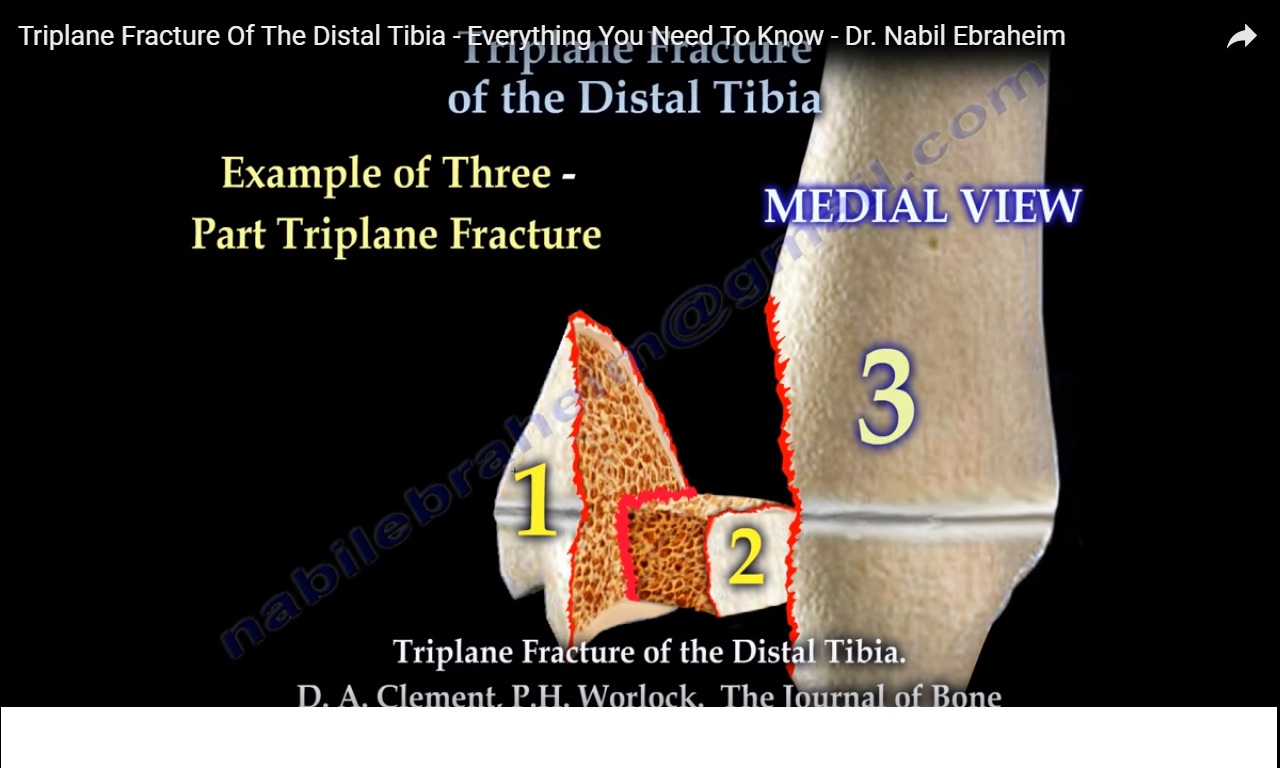A triplane fracture of the distal tibia usually occurs during adolescence and occurs before complete closure of the distal tibial physis. The distal tibial physis (growth plate ) is a weak area which closes from central to medial, with the lateral side being the last part to close.
Triplane fracture is a Salter-Harris type IV fracture involving three planes:
1-Coronal (metaphysis) (frontal plane ) Salter type II
2-Transverse (growth plate) (horizontal plane) Salter type III
3-Sagittal (epiphysis)Salter type III
The fracture has several variations and occurs due to external rotation force. Usually occurs between 12-15 years of age.
Triplane fractures are complicated three dimensional fractures. Two-part fracture is a Salter-Harris type IV. Three-part fracture is a combination of Salter-Harris type III in an AP view and type II in a lateral view.
Example of a two-fragment triplane fracture.
Example of a three-part triplane fracture. Posterior tibial metaphysis with the attached part of the posterior epiphysis. Separate anterolateral epiphyseal fragment. The anterior tibial metaphysis with the attached anteromedial part of the epiphysis.
CT scan is helpful
ORIF is the treatment if there is displacement of the fragment(s) more than 2 mm.

Leave a Reply